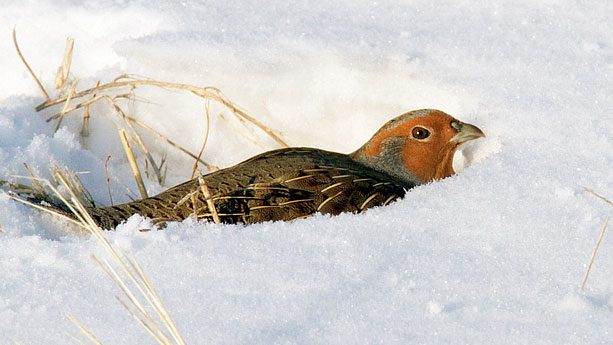
Grow Pear Trees Successfully In Your Back Yard
Marjory Blare, Dakota County Master Gardener
Pear trees can be just as easy if not easier to grow than apples! Find out how in this article. I am sorry to report that Partridges are a mostly ground-dwelling bird, so you’ll likely not see any in your trees.

Pears originated in central Asia and have spread around the world. They have been hybridized to survive in hardiness zones 4-8, although some can tolerate zone 3. The blossoms will die if there is a spring freeze of 24F°. Pear trees can be up to 40’ tall, but there are some semi-dwarfing rootstocks that will result in a 15-20’ tree. Most pears fruit on spurs. Spurs form on wood that is two years or older. Fruit buds are fat and furry, leaf buds are slender and smooth.

Pear trees will do reasonably well in a wide range of soil types, although they don’t like wet feet. Pear trees require full sunlight all day long.
You will need two varieties of pears for optimum pollination. “Summer Crisp” and “Patton” work well together; both have a certain amount of disease resistance and are hardy here. Fire-blight is the most serious disease and should be pruned out to a minimum of 6” below the disease.
The pests that can attack pear trees are rabbits and voles (winter bark damage), deer (browsing and antler rubbing). Japanese beetles feed on pear leaves, but not to damaging levels.
This link includes planting instructions:
https://extension.umn.edu/fruit/growing-pears
Pruning is just cuts and consequences. A plant can be pruned at any time of year – you’ll just get different consequences.
Begin pruning a pear tree in late winter before the buds begin to swell. Earlier pruning encourages water sprouts and suckering in spring and summer and also increases the chances of winter injury to the pruning sites.
Summer pruning of fruit trees controls excess growth on a tree by removing energy-wasting water sprouts. Summer is also a good time to remove leafy upper branches that excessively shade fruit on lower branches.
https://extension.psu.edu/pruning-apples-and-pears-in-home-fruit-plantings
A few weeks after pruning, new growth will be vigorous and can have very narrow crotch angles. To prevent this, you need to force the new shoots to a more horizontal growth pattern. If a limb is not spread, as in the picture to the left, a bark inclusion can develop, i.e. the bark of the trunk and the branch grow together. This weakens the branch and can be an entry point for disease.

A wide-angled branch, results in a stronger branch that can carry future heavy crops. Limb spreaders improve the tree shape and form strong crotch angles. Young branches can be clothes pinned, tied or weighted down. Spreaders can be either short pieces of wood with sharpened nails driven into each end or sharpened metal rods. Spreaders should remain in place until the branch "stiffens up" (1-2 years).

The summer after the first winter pruning, remove any water sprouts that grow on a heavily pruned tree. Water sprouts grow around pruning cuts. If you use pruning shears, you never quite get the entire shoot. Instead, pull the shoots off the trunk and major side branches, shoots can be pulled off safely throughout the season as long as their bases remain tender and green.
Heading cuts shorten a limb or shoot. This removes the terminal bud that normally stops shoot development from buds closer to the trunk. This also causes several shoots to develop near the cut, which results in a thicker, denser canopy and reduced light levels.
A thinning cut removes an entire shoot or branch back to its point of origin. Thinning cuts do not induce excessive vigorous regrowth and will open the tree to allow more sun inside the interior.
Harvest and Storage
Pears should be harvested while they are still firm and green. Some pears rot from the inside out, if they ripen on the tree. For best results, find out the approximate maturity time for the cultivar, watch for a slight color change from a darker to a lighter shade of green, and check fruit size. Store mature pears in the refrigerator, then ripen at room temperature for up to a week before eating or canning. Pears bruise easily, so, handle carefully when picking and storing!
https://extension.unh.edu/resource/growing-fruits-growing-pears-home-orchard-fact-sheet
Happy growing and check out the many wonderful pear recipes found on the internet!
Photo Credit: Marjory Blare




